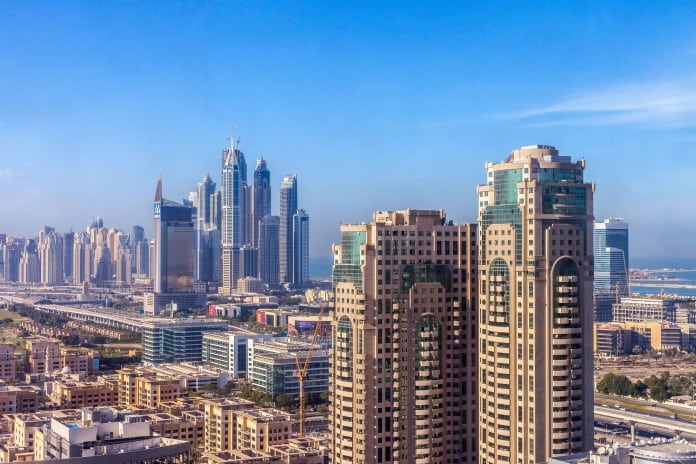
- Construction and real estate continue to play pivotal roles in transitioning away from oil dependency in the region.
- The non-oil sector accounts for 73% of the UAE’s GDP.
- Infrastructure-focused developments in Saudi Arabia and UAE will drive growth in 2024.
- Logistics and industrial sectors in the Middle East are thriving from ongoing structural reforms and an increase in foreign trade.
- The residential rental sector’s growth is likely to moderate in the UAE due to new launches and handovers.
Despite global uncertainties, the Middle East economy and the closely intertwined real estate sector have recorded robust performances. This has been driven by the significant expansion in the non-oil sector, especially in Saudi Arabia and the UAE. Both countries have witnessed large-scale economic diversification, with construction and real estate playing pivotal roles in transitioning away from oil dependency.
The UAE is set to achieve an expected 5% growth in 2024 with the non-oil sector currently accounting for 73% of the GDP, indicating strong private sector performance and a reassuring message to investors. Saudi Arabia, on the other hand, will witness more development in finance and opportunistic investments.
Speaking on the research conducted as part of Savills global thought leadership programme Impacts, Swapnil Pillai, Associate Director of Research at Savills Middle East, said, “In the Middle East, economic sentiment remains positive against the backdrop of economic uncertainties globally. In the UAE and Saudi Arabia specifically, the non-oil sectors have expanded significantly over the past two years, remained healthy, and are well positioned to grow over 2024, which will benefit the real estate industry.”
Rents outlook
Savills global research anticipates infrastructure-focused developments to drive economic growth in 2024, with the bulk of these forthcoming developments being concentrated in Saudi Arabia and the UAE.
Strong rental growth is expected in the office sector as vacancy rates remain low. Despite post-pandemic flexible working models, Grade A office vacancy rates in the UAE average less than 5% across key prime locations, with Grade A developments driving double-digit rental increases in 2023. This tendency is projected to continue with limited new supply, which will drive prime rent growth by as much as 20% in 2024.
The residential rental sector’s growth in the UAE is likely to moderate due to new launches and handovers, which is expected to improve supply. However, average price points have increased, and new benchmark prices for luxury properties set in 2023 are likely to stay. Fuelling this is development activity in Abu Dhabi, which continues to surge with new master-planned schemes launched across the luxury segment.
In Riyadh, population growth, which is projected to hit 8.5 million by 2030, up from 6.4 million in 2015, has played a major role in increasing the demand for residential properties.
Yields outlook
Looking ahead, anticipated declines in central bank rates are expected to stimulate investment activity, stabilising yields towards the middle of the year, with some downward pressure on prime yields in parts of the market. Logistics yields are expected to remain stable in the first half of 2024 but may experience slight tightening as central banks begin to cut interest rates in the latter half of the year. Despite a lack of liquidity, downward pressure on office sector prices is expected to ease after the first six months, with prime office yields stabilising.
“While we may not be entirely immune to global economic sentiment, various policies by the government and their effort in stimulating growth across market sectors would be advantageous for our region in riding out economic storms,” Pillai concluded.












